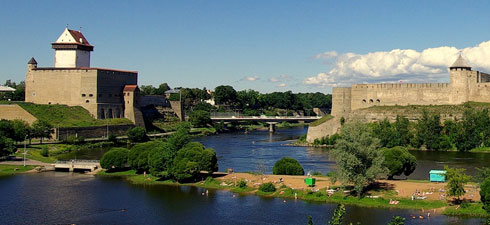In this context, rumours of all sorts are circulating around Narva. Some believe that denominations smaller than one Estonian crown will not be exchanged, or perhaps at a lower rate. Others say that there will be cash shortages or a lack of smaller bills in the stores when the euro takes over.
These rumours could incite "babouchkas" to run, with their grandchildren in tow, to exchange all their coins for banknotes at the only bank in town equipped with a machine for counting coins. Why bring the grandchildren? Because for them, the service is free of charge. In the rush, many have already exchanged their Estonian crowns for euros, anticipating an eventual rise in the exchange rate this fall.
Moneychangers with few scruples
Currency-exchange offices, much better informed and rather numerous in this border town, display exchange rates to their liking. The most absurd rumour going around concerns the price of the rouble, that it will rise as well. On this subject, there are as many "experts" as there are explanations: "Prices rose in Finland when the euro arrived. Prices are already rising in Estonia. (...) If prices are rising everywhere, then why not that of the rouble?"
For a great number of Estonians here, Russian currency remains an important means of payment, as it facilitates buying and selling across the river on a daily basis. It is therefore a very important issue for the local population. Logically, once the euro arrives, the rouble will be less expensive. But for the moment, currency exchanges are exploiting these rumours in order to "play" with the exchange rates of the three currencies, thoroughly confusing the people of Narva. Only after the Estonian crown is taken out of circulation will the true exchange rate between the euro and the rouble become stable, at least in the minds of the Estonians.
To rectify this situation, Estonian authorities urgently need to do everything possible to stem the propagation of the nonsense and rumours, which led one elderly lady to tell me: "Personally, I will exchange all my money for roubles in December, because you never know...".
Was this article useful? If so we are delighted!
It is freely available because we believe that the right to free and independent information is essential for democracy. But this right is not guaranteed forever, and independence comes at a cost. We need your support in order to continue publishing independent, multilingual news for all Europeans.
Discover our subscription offers and their exclusive benefits and become a member of our community now!












